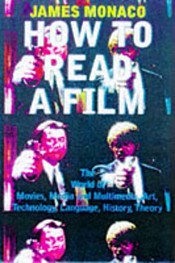How to Read a Film
By James Monaco
< Back

Richard Gilman referred to How to Read a Film as simply "the best single work of its kind." Janet Maslin of The New York Times Book Review marveled at James Monaco's ability to collect "an enormous amount of useful information and assemble it in an exhilaratingly simple and systematic way." And Richard Roud, Director of the New York Film Festival stated, "Anyone who writes about film, who is interested in film seriously, just has to have it." Clearly, few books on film have met with such critical acclaim as How to Read a Film. Since its original publication in 1977, this hugely popular book has become the definitive source on film and media. Now, James Monaco offers a completely revised and rewritten third edition that brings every major aspect of this dynamic medium right up to the present day. Looking at film from many vantage points, Monaco discusses the elements necessary to understand how a film conveys its meaning, and, more importantly, how the audience can best discern all that a film is attempting to communicate. He begins by setting movies in the context of the more traditional arts such as the novel, painting, photography, theater--even music--demonstrating that film as a narrative technique is directly comparable to these older mediums. He points out that much of what we see and experience in film can be traced directly back to other art forms. Accordingly, as film is a technology as well as an art, he examines the intriguing science of cinema and follows the development of the electronic media and its parallel growth with film during this century. A new chapter on multimedia brings media criticism into the late 1990s with a thorough discussion of such topics as virtual reality and cyberspace and their relationship to film. Monaco goes on to show how film operates as a language, describing the various techniques and concepts responsible for the often visceral reactions that only film can elicit.
Lavishly illustrated with over 350 halftones and seventy-four original diagrams, as well as discussions on the development of the art of movies and the major theoretical developments of the last seventy-five years, How to Read a Film is an exciting and definitive behind the scenes look at the complex world of film.
< Back
